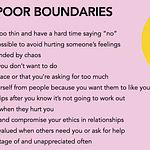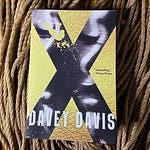Like every good neoliberal bisexual feminist woman of heterosexual experience learning about queer rights in my early twenties, I too believed that sexuality and gender were two distinctly different things. I would get on my newly queer-in-theory soap box and explain to my cis-het boyfriends or dwindling number of straight friends how gender and sexuality were like the sun and the moon. Here is The Key to understanding the transgender community better! Here are all the ways your ideas about feminine gay men or butch lesbians are wrong! I was parroting what I had heard others say, fancy college queers who had high school GSAs, or tumblr accounts run by white gays who had definitely never heard of Black feminism. Not to blame this on anyone, I clearly didn’t do my homework either.
There are so many ways we dumb down our own experiences so that others will understand. There are also ways we speak from experiences we haven’t had ourselves (allies, right?!). Sometimes it’s too complicated to spend the time and effort to make people really see us, and sometimes missing the mark is ok as long as it’s close enough. I don’t need to list the embarrassing ways that the mainstream queer community creates narratives that make us more palatable to the heterosexual overlords they so deeply want approval from. The ideas that support “we’re just like you” are harmful to everyone on the margins who can never be just like them, or who simply refuse.
Who you want to fuck and how you want to be perceived are two different things, but we can’t pretend as queer people that the two aren’t in constant conversation with one another. For those of us who prioritize sex and the erotic, these are almost impossible to compartmentalize. There’s a validation loop that happens when you fuck the people who make you feel safe, grounded, home. When someone sees you with and without clothes exactly how you want to be seen, fucks you exactly how you want to be fucked (or lets you fuck them, etc), it illuminates the potential for embodiment. For me, it was a turning point for self-worth. Now that I know what this feels like, why would I ever accept anything less?
There’s a lot of jokes to be had (all true) about two femmes fucking. It’s just a lot of complimenting each other back and forth—stealing a few seconds to appreciate your lover because you know exactly what goes into getting those stockings on, the effort in matching your panties to your bra, or applying a perfect face of makeup. I have written (several times) about the first time I had sex with another femme, and it was an experience that continues to deserve my attention. I felt seen like I never had before and I was able to locate my erotic self in the way I internalized my partner’s desire for me. Having someone so interested and sure of what they wanted that they saw in me was an incredible feeling. Sex and gender, separate, for who?
It took me many months to finally finish my holy grail of books, The Persistent Desire: A Femme-Butch Reader edited by Joan Nestle. As I’ve slowly devoured each page, I’ve been really inspired to think deeper about the book’s main theme of queer gender as erotic identification. Not that I haven’t thought about this a million times before, but reading 500 pages of personal accounts from dykes about how their gender cannot be separated from their sexuality long before the queer rights activists I met in college told me the exact opposite is just a trip. And let me tell you, everything seems to come back around to my ever-present thesis that perverts are magic.
To give context on why this 1992 anthology is important, femme-butch pairings were sacrilegious in lesbian feminism. Fucking with power (SM) was sacrilegious to lesbian feminism. To fight the patriarchy, one mustn't wear men’s clothes, or dress too feminine so as to attract men. Butches and femmes were recreating heterosexuality. Androgyny and equal power amongst all women was the way to become woman-aligned. Anything else was entering enemy territory!
Reader, I have a confession to make. As a baby femme who hadn’t yet learned or cared about her history, I also believed that butch-femme couples were recreating heterosexuality. I had no idea that my line of thinking was recycled repression from decades past. Had I been pointed in the right direction, I would have quickly discovered that many of the people who came up with this idea also hated femmes (me!) along with trans women and sex workers and sadomasochists and basically anyone who was cool and attractive!!! Another reason to be embarrassed by younger me, but growth is wonderful.
This was a projection stemming from a mixture of jealousy and resentment. I thought becoming gay meant the instant realization of my childhood fantasies of high-femme porn stars with sexy lingerie and delicious smelling long hair. My experience of becoming gay actually was the complete opposite of that. Well, the smokin’ hot high-femmes were everywhere, they just all had masculine partners. There was one femme-femme couple that lived in another city and I thought of their love as sacred and unattainable. With the understanding that no one owed me attention, sex, or their boobs in my face, it was really heartbreaking to feel erotically invisible by those I desired the most. I needed a femme to devour me like I needed air, and I was gasping for breath. Basically what happened was that they weren’t erotically available to me (in general) so I wrote them off as straight.
I don’t remember when I changed my mind about this, probably when I finally got laid and stopped being a hater — highly recommended! Another reason that reading about lesbian history as a young person, and specifically the history of butch-femme relationships, would have really knocked some sense into me. One of the most well known writings on butch-femme love that exists is in this anthology. What We’re Rolling Around in Bed With: Sexual Silences in Feminism, A Conversation Toward Ending Them is a 1981 discussion between Amber Hollibaugh and Cherríe Moraga (originally published in Heresies 12: Sex Issue). Hollibaugh and Moraga have a candid conversation about sexual desire and what it means to want your partner to eroticize you, the power in responding to the need of your partner with your body, and the role that dyke genders play in this exchange.
AH: My fantasy life is deeply involved in a butch/femme exchange. I never come together with a woman, sexually, outside of those roles. Femme is active, not passive. It’s saying to my partner, “Love me enough to let me go where I need to go and take me there. Don’t make me think it through. Give me a way to be so in my body that I don’t have to think; that you can fantasize for the both of us. You map it out. You are in control.”
It’s hard to talk about things like giving up power without it sounding passive. I am willing to give myself over to a woman equal to her amount of wanting. I expose myself for her to appreciate. I open myself up for her to see what’s possible for her to love in me that’s female. I want her to respond to it. I may not be doing something active with my body, but more eroticizing her need that I feel in her hands as she touches me.
In the same way, as a butch, you want and conceive of a woman in a certain way. You dress a certain way to attract her and you put your sexual need within these certain boundaries to communicate that desire… And yet, there’s a part of me that feels maybe all this is not even a question of roles. Maybe it’s a much richer territory than that.
CM: Yes, I feel the way I want a woman can be a very profound experience. Remember I told you how when I looked up at my lover’s face when I was making love to her (I was actually just kissing her breast at the moment), but when I looked up at her face, I could feel and see how deeply every part of her was present? That every pore in her body was entrusting me to handle her, to take care of her sexual desire. This look on her face is like nothing else. It fills me up. She entrusts me to determine where she’ll go sexually. And I honestly feel a power inside me strong enough to heal the deepest wound.
Hollibaugh is a high-femme who is known for her desire for stone butch lovers (Hello out there if you have my copy of My Dangerous Desires, please return it!). Every time I read or listen to her talk about her desire for butches, it helps me understand my own desires better. She describes giving herself over to her lovers to do as they wish, locating her own pleasure in how deeply her partner desires her, like an ouroboros of hunger. I want you to want me, I need you to need me.
In reading story after story of the iconic pairing between butch and femme, I can only resonate with the butch in this position. As a top, my desire is for femmes who love bottoming, who are consumed by how much they want to be absolutely destroyed. I want to look down and see frilly pink socks and long batting eyelashes staring back up at me. I want to hear “more, please” come from lips painted the perfect shade of red. Who doesn’t want to be with someone who will fuck you with their eyes, their lust made known long before they actually touch you? Truthfully, I have no better way to describe these desires than objectification. Objectification is known as the enemy of feminism, sexual bores have long decried it as an act of the patriarchy, stripping women of their humanity, a problem of morality.
Philosopher Immanuel Kant, who some (just me, actually) refer to as the first honorary sex-negative lesbian feminist, wrote a lot about the morality of objectification and sexual impulses as the downfall of humanity. His words inspired the likes of Dworkin and MacKinnon.
“The desire which a man has for a woman is not directed towards her because she is a human being, but because she is a woman; that she is a human being is of no concern to the man; only her sex is the object of his desires. Human nature is thus subordinated. Hence it comes that all men and women do their best to make not their human nature but their sex more alluring and direct their activities and lusts entirely towards sex. Human nature is thereby sacrificed to sex. If then a man wishes to satisfy his desire, and a woman hers, they stimulate each other’s desire; their inclinations meet, but their object is not human nature but sex, and each of them dishonors the human nature of the other. They make of humanity an instrument for the satisfaction of their lusts and inclinations, and dishonor it by placing it on a level with animal nature. Sexuality, therefore, exposes mankind to the danger of equality with the beasts.” (hot!)
When people think about objectification as a fetish, the image most common is the hole, a sub may be wearing a hood with just an exposed mouth and being told they are only good for one thing. Not to try to make objectification any more respectable, I love holes! But objectification is an expansive erotic practice that Kant, who clearly never had sex, is not keen on understanding. What's most fascinating is that in all he gets wrong, he does seem to propose that gender and sexuality are intrinsically linked, nevermind that he was talking about heterosexuals. Men desire women not because they are human, but because they are women! Everyone is out here just trying to make their sex more alluring to become the objects of lust. Let them live!
My sadistic lusting is responded to willfully by the objects of that lust. Leather, dyke, and SM culture stresses the importance of signifying your desires. It is not enough for us to be visible as dykes, we must erotically present ourselves to attract our partners. The aesthetics of top/bottom make for notably funny memes but they are actually quite helpful in signifying who we are and hint at what we may be looking for. From flagging and leather harnesses (yes they have a sexual purpose), to high heels or tartan skirts, we beckon our erotic matches. Objects of my desire hold my desire because they can erotically present themselves as both femme and bottom, the type who wear skirts a little too short and bend over on purpose to watch my reaction. The objects of my desire happily place themselves into that position by signaling to me that they want to relinquish control.
Joan Nestle writes in The Femme Question,
“Living a butch-femme life was not an intellectual exercise; it was not a set of theories. Deep in my gut I know what being a femme has meant to me, but it is very hard to articulate this identity in a way that does justice to its fullest nature and yet answers the questions of a curious reader. In the most basic terms, butch-femme means a way of looking, loving, and living that can be expressed by individuals, couples, or a community. In the past, the butch has been labeled too simplistically the masculine partner and the femme her feminine counterpart. This labeling forgets two women who have developed their styles for specific erotic, emotional, and social reasons. Butch-femme relationships, as I experienced them were complex erotic and social statements, not phony heterosexual replicas. They were filled with a deeply lesbian language of stance, dress, gesture, love, courage, and autonomy.”
She speaks to the experience of being in relation to others and in community, not an intellectual exercise, not a set of theories, things we only truly know when we live them. Experience is only made possible when we touch grass and ass, and get off the internet. Something that haunts me to this day is that on the NYC Queer Cruising Facebook Group (another loss to Sesta/Fosta albeit probably for the best), someone once suggested that the mods ban gender preference (not genital preference, which was already banned) from cruising ads claiming that having any preference for gender wasn’t actually queer. And, well, I hope that person is reading this. :)
“We are all hungry for the power of desire and we are all terribly afraid.” Dorothy Allison













